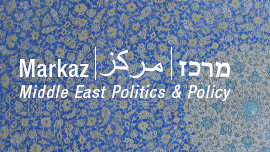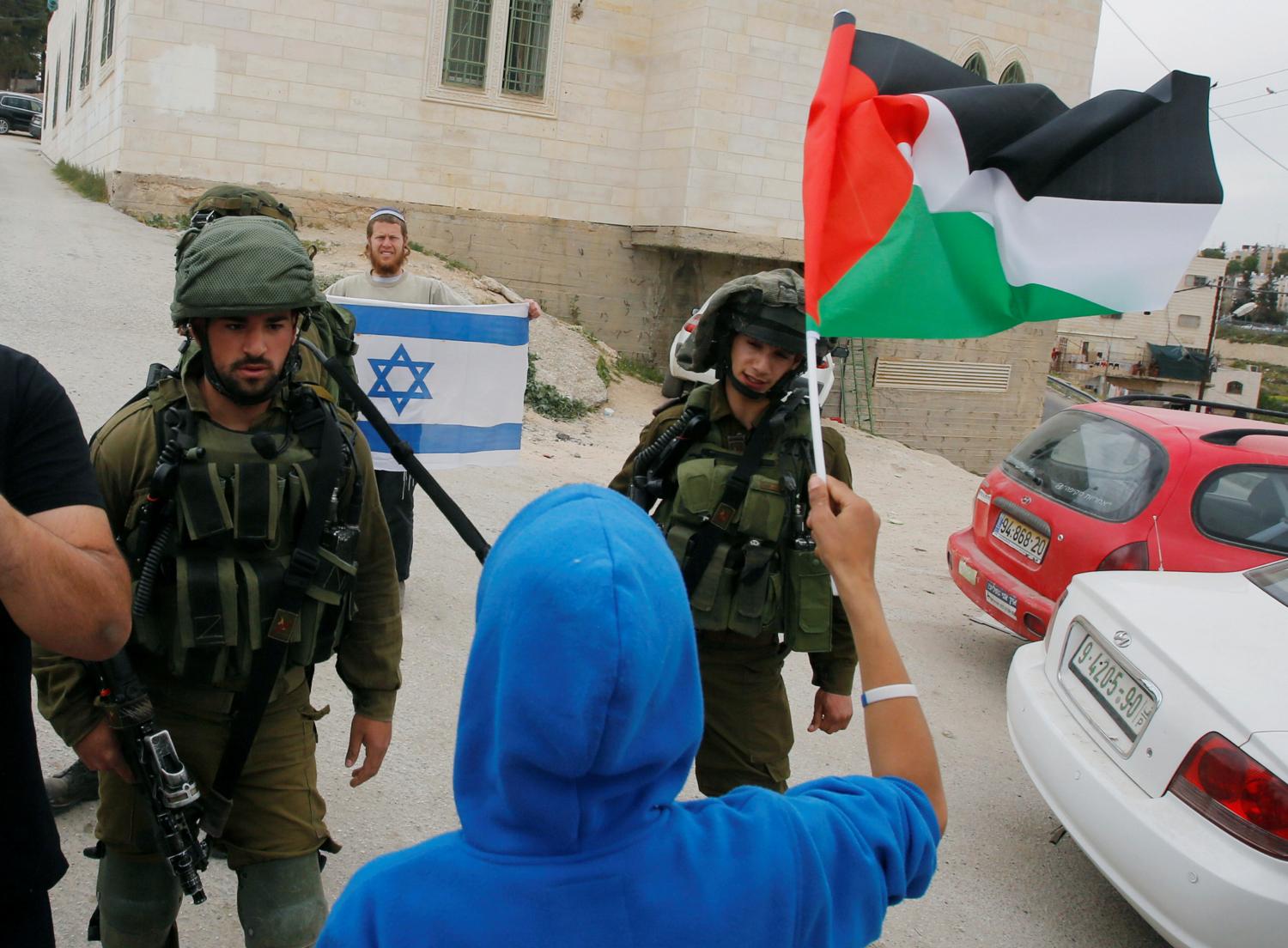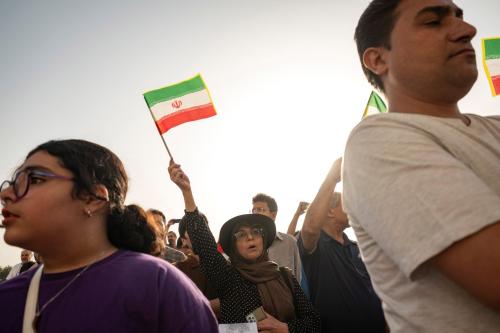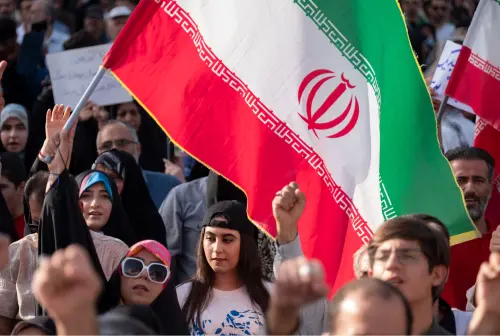The Middle East peace process, as it has existed for the past quarter century, has for all intents and purposes collapsed. The problem goes well beyond the repeated failure of negotiations. Apart from the existence of the Palestinian Authority (PA) itself and the various arrangements needed to keep it afloat (tax transfers, security coordination, etc.), the bulk of the peace process “architecture” constructed since the 1993 Oslo Accords has been either abandoned or dismantled. The collapse of U.S.-sponsored negotiations in April 2014, followed shortly thereafter by yet another devastating war in Gaza and a wave of violence in Jerusalem, demonstrated rather comprehensively the inability of the “peace process” either to resolve the conflict or to manage it.
Notwithstanding this bleak picture, the end of the peace process does not in and of itself preclude the possibility of a peaceful settlement to the Israeli-Palestinian conflict based on a two-state solution, which remains an achievable—albeit theoretical—possibility. Doing so, however, will require addressing several existing trends that continue to shape realities on the ground as well as Israeli and Palestinian decision-making. The Palestinians are especially vulnerable to these trends as both the weakest and the least cohesive party in the conflict. The three major trends are: a Palestinian leadership crisis, a deepening of the Israeli occupation, and growing internationalization of the conflict. A fourth factor, Gaza and Hamas, represents a combination of all of these.

Photo courtesy of REUTERS/Mohammed Salem
Palestinian leadership crisis
Palestinian President Mahmoud Abbas came to power in January 2005 on a platform of unifying Palestine’s unruly political factions under his leadership and securing a peace deal with Israel that would end the occupation and establish an independent Palestinian state once and for all. A decade later, Abbas presides over a war-shattered and impoverished Gaza Strip that remains beyond his reach and a West Bank that has been colonized and fragmented beyond recognition. Along with the debilitating split between Hamas-controlled Gaza and the Fatah-dominated PA in the West Bank, Palestinian politics is plagued by institutional decay and stagnation (within both the PA and PLO), chronic fiscal crises, growing PA repression, and Abbas’s own increasingly autocratic tendencies.
All of these point to a deeper crisis of legitimacy within the Palestinian leadership, paralleling recent trends in the broader Arab world. The current legitimacy crisis is further complicated by the dim prospects for elections, which cannot be held without Hamas approval, and a lack of clarity on the question of Abbas’ successor.

Photo courtesy of REUTERS/Eduardo Munoz
The PA’s ineffectiveness has sparked growing calls, both inside and outside Palestine, for dissolving the PA. Although not yet imminent, the dissolution (or eventual collapse) of the PA would be the greatest blow yet to a two-state solution. While Abbas and other Palestinian leaders occasionally invoke the threat of dissolution for political leverage, it is highly unlikely that he (or a future successor) would voluntarily dismantle the PA. Indeed, doing so could be politically suicidal, not only because of the roughly half million Palestinians who rely on government paychecks but because his Fatah-dominated PLO has, for the better part of four decades, staked its political fortunes on the “historic compromise” of achieving a two-state solution.
In any event, a divided and dysfunctional Palestinian leadership of questionable legitimacy may not be in a position to negotiate, much less implement, a conflict-ending peace deal with Israel. One possible way around this dilemma would be for the Obama administration to publicize its own ideas for resolving the conflict. These so-called Obama Parameters, however, while having the potential to bridge the vast power imbalance between Palestinians and Israelis, could end up doing more harm than good. This is particularly true for Abbas, for whom an American-inspired peace plan is likely to face significant domestic opposition while leaving him little room to shape its substance and even less to reject it outright. In this regard, Secretary Kerry’s proposed “framework” of 2014, which was predictably heavy on Israeli priorities (security and refugees) and relatively thin on Palestinian ones (sovereignty and Jerusalem), is highly instructive.
Deepening Israeli occupation
Perhaps the one true constant in the current Israel-Palestinian dynamic is the deepening of the Israeli occupation, now nearly a half-century old. In the West Bank (including East Jerusalem), the occupation is centered around Israel’s ever-expanding settlement enterprise, along with the many associated practices that help to sustain it (home demolitions, residency/ID revocations, access and movement restrictions, etc.), while in Gaza it has taken the form of the ongoing air, land, and sea blockade. In either case, the aim is to maximize Israel’s control over the Palestinian population, its land, and its resources while minimizing Israel’s responsibility for the same. Moreover, maintaining this reality indefinitely has required increasing amounts of force and coercion on the part of Israel.
The dilemma over how to deal with Israeli “facts on the ground” has led some to propose partial remedies such as a limited settlement freeze in West Bank areas outside of Jerusalem and the so-called settlement blocs—ignoring the fact that these are precisely the areas on which the viability of a Palestinian state most hinges. Others have sought to revive the idea of a unilateral withdrawal (or the closely related “coordinated disengagement”), similar to the one carried out in Gaza a decade ago. Even if such proposals were politically feasible (which seems highly unlikely given the negative attitudes of both Israelis and Palestinians toward the Gaza experience), they are unlikely to advance a viable two-state solution and could even accelerate its demise.
From Israel’s standpoint, a unilateral withdrawal, even one “coordinated” with the PA, carries considerable pain and very little gain. A decision to uproot several thousand settlers from the biblical heartland would almost certainly bring down Netanyahu’s right-wing coalition while providing no guarantee that evacuated areas would not be used as a launching ground for attacks on Israelis. Such a plan would have even less appeal for Palestinians, for whom Israeli unilateralism represents not an alternative to the status quo but the very embodiment of it. The prospect of expanding PA areas of jurisdiction by a few square kilometers would probably not offset the far greater risks to Palestinian strategic interests—consolidating Israel’s de facto annexation of the settlement “blocs” (roughly 10 percent of the West Bank) and the Jordan valley (another 25 percent) while further isolating Palestinian Jerusalem, most likely permanently.
The deepening of Israel’s occupation, meanwhile, has simultaneously increased the likelihood of Palestinian violence directed at Israelis and highlighted the ineffectiveness of Palestinian political leaders, whether Fatah or Hamas. Whether such violence is organized, something like the dreaded “third Intifada,” or takes the form of more ad hoc violence (along the lines of recent stabbings, disturbances in Jerusalem, or sporadic rocket fire from Gaza), is more a function of internal Palestinian political dynamics than of any concerted plan by one faction or another.
A mass uprising, whether focused on largely nonviolent grassroots mobilization like the first intifada (1987 to 1993) or the considerably more violent paramilitary activities of the second intifada (2000 to 2004), requires a degree of internal coordination and discipline that seems almost unimaginable today given the polarization and dysfunction of internal Palestinian politics. In addition, the prospect that popular unrest directed at the Israeli occupation could morph into an anti-PA rebellion remains a distinct possibility as well.
The key to much of this uncertainty rests on the viability of the PA’s ongoing security coordination with Israel, a commitment which President Abbas has described as “sacred” and which his critics increasingly decry as treasonous. Despite the conventional wisdom in Washington, the biggest threat to the viability of PA security coordination comes not from a lack of funding but from the lack of balance in addressing each side’s interests. Whereas PA/Israel security coordination provides direct benefits to Israel (indeed, the security of its citizens is Israel’s top priority), it carries only secondary benefits for Palestinians, mainly by reducing the likelihood of Israel Defense Force (IDF) attacks on Palestinians. Meanwhile, no institutional or political mechanisms exist to protect Palestinian lives or property, either from IDF incursions, arrests, and shootings, all of which continue more or less unabated, or from the growing specter of Israeli settler terror.

Photo courtesy of REUTERS/ Kevin Lamarque
Growing internationalization
Attempts at internationalizing the conflict, which are generally favored by Palestinians and opposed by Israelis, are a direct outgrowth of two key deficiencies in the peace process—the lack of accountability and the failure to address the huge power disparity between the parties. There are key differences, however, between “official” internationalization efforts pursued by the PLO/PA leadership and those being pushed unofficially by Palestinian civil society groups and their sympathizers.
Thus far, internationalization initiatives by the Palestinian leadership have been limited and for the most part tactical, focusing on such things as calls for boycotting Israeli settlement products, gaining symbolic recognition of Palestinian statehood in the international arena, and pushing various U.N. resolutions. Even Abbas’s recent decision to join the International Criminal Court (ICC) was aimed more at blunting domestic political pressure and criticism—in response to the massive death toll in last summer’s Gaza war and growing unrest in Jerusalem and his perceived impotence in relation to both—than at genuinely prosecuting Israelis for alleged war crimes.
The more potent “threat” comes from the growing international Palestinian solidarity movement, particularly the BDS movement, which calls for boycotts, divestment, and sanctions against Israel until it ends its occupation and respects Palestinian rights. The movement, formed in 2005 in response to a call by Palestinian civil society, is quite diverse, and includes both proponents of two states and one-staters, as well as many progressive Jewish groups.

Photo courtesy of REUTERS/ Yuri Gripas
The BDS movement is also a response to the inability of Palestinian actors to effectively challenge the occupation, whether through negotiations or “armed struggle.” Yet, unlike either the PA or Hamas, BDS lies beyond the reach of Israeli authorities and has no stake in existing arrangements such as the Hamas-Israel ceasefire in Gaza or the Oslo-based arrangements that keep the PA afloat. As such, it is also largely immune from the machinations of the U.S.-led peace process.
The rapid growth of BDS, particularly in Europe but also in the United States, has alarmed Israel and its supporters. To accusations that BDS unfairly “singles out” Israel, BDS activists counter that such disparate treatment is warranted in light of its “special relationship” with the United States, which consistently shields Israel from sanction or even criticism in virtually all international forums. Whatever one thinks of the legitimacy of BDS, in the absence of other constraints on Israeli behavior or a credible diplomatic process, the movement is likely to continue to grow.
Gaza and Hamas
The situation in Gaza represents a special case that involves elements of all of three trends. Since 2005, Israel, the United States, the Quartet, and even the PA, have dealt with Gaza and Hamas as though they were both outside of the Israeli-Palestinian conflict and the “peace process.” Though most of the costs of this misguided policy have been borne by Gaza’s 1.7 million Palestinians, neither Israeli nor U.S. policy have been spared.
After three devastating wars in five years, Gaza remains an open wound that could easily reignite if not properly addressed. Reconstruction efforts and the possibility of reopening Gaza’s borders are tied to Hamas-Fatah reconciliation and reasserting a PA presence in the strip, which have been delayed by internal squabbling between Palestine’s two main factions. Meanwhile, there is a growing humanitarian crisis as well as a mounting threat from groups affiliated with or sympathetic to the so-called Islamic State.

Photo courtesy of REUTERS/ Mohammed Salem
However distasteful Hamas may be to Israelis or others, it remains a major force in Palestinian politics with a broad following, and cannot be wished away or boycotted out of existence. Moreover, notwithstanding its charter, Hamas leaders have repeatedly expressed a willingness to accept a Palestinian state on the 1967 borders. Much as Israel tried and failed to eradicate the PLO in the 1980s, its repeated wars with Hamas have failed to destroy or even dislodge the group from power. To the contrary, repeated wars in Gaza have helped consolidate Hamas control while further tarnishing Israel’s image and feeding the drive to “internationalize” the conflict.
Conclusion: An alternative path forward
In light of the foregoing, the United States and international community must now decide between two distinct paths. The first is to forge ahead more or less under the existing (failed) framework. This approach, which is favored by Secretary of State John Kerry and represents the path of least resistance, is likely to end one of two ways. The more likely outcome is total failure, consisting of yet another round of failed negotiations (alongside those of 2008, 2010 and 2013-14) along with an inability to prevent further outbreaks in violence, which are virtually guaranteed. Alternatively, the best that could be achieved under present conditions is an artificial “success” in which a highly inequitable and ultimately unsustainable agreement that falls far short of a genuinely sovereign and viable Palestinian state is more or less imposed on the Palestinians. This scenario, as Nathan Brown explains, “would likely codify existing injustices rather than resolve them,” as well as reinforce internal Palestinian political dysfunction.
A considerably more difficult but potentially more effective approach would be to create an entirely new framework for peace, one that is more equitable and consistent with international norms and that is capable of addressing the enormous (and growing) power imbalance between the parties as well as negative “facts on the ground.” Among other things, such an approach should include: a reaffirmation of the terms of reference (i.e., UNSCR 242, 1967 lines), clear articulation of the endgame (i.e., full Palestinian sovereignty, two capitals in Jerusalem, etc.), the reintegration of Gaza into the peace process, (e.g., by promoting Palestinian reconciliation), a genuine settlement freeze (including East Jerusalem and the “blocs”), and the introduction of monitoring and verification mechanisms based on parallelism and mutual accountability.
Short of inventing a new peace process, which admittedly seems unlikely, it may still be possible to salvage a two-state solution outside the context of bilateral negotiations, for example through an international push, with U.S. backing, for recognition of a Palestinian state (along the 1967 lines) perhaps through a U.N. Security Council resolution. While this would not necessarily alter realities on the ground, it could impel Israel to adopt a more accommodating position in future negotiations.
The Brookings Institution is committed to quality, independence, and impact.
We are supported by a diverse array of funders. In line with our values and policies, each Brookings publication represents the sole views of its author(s).





Commentary
The end of the peace process: What comes next?
September 17, 2015